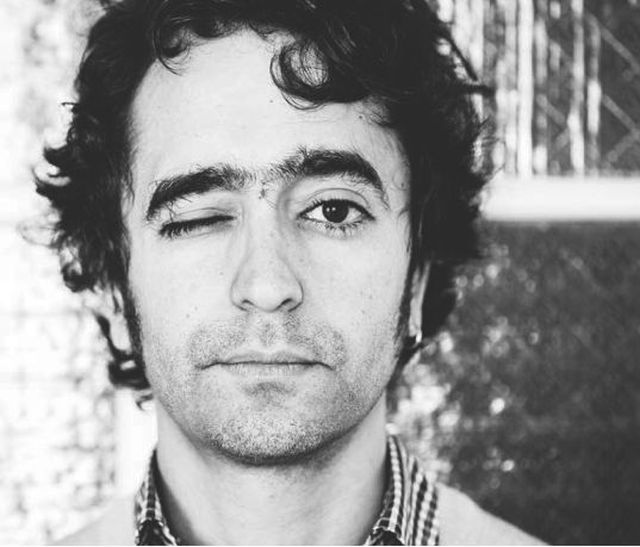“We may not be machos, but we’re too much”
- Books
- Culture Folder
- Jan 19
- 5 mins

A fascinating transgressive joy pervades the photographs gathered in this exhaustive round-up of the ‘queer’ Barcelona of the early 20th century to today. All the photographs are quite different but there is a thread running through them: they feature people who dare to dress and love just as they are and not how the social rules of the period dictate. Gent de ploma i marabú is a book about being rebellious simply by wanting to exist without losing one’s identity: it is the story of this struggle.
I begin by talking about beauty. A beauty that is obvious even on the cover and when you first browse its pages: this book is beautiful. Literary reviews often pay scant attention to formal aspects like the design. In the case of Gent de ploma i marabú, written by Thais Morales and Carme Pollina and published by Barcelona City Council, it would be senseless not to include a special mention of the excellent work by the designer Roger Adam, who has graphically and objectually conceived the series of writings and photographs making up this exhaustive round-up of ‘queer’ Barcelona from the early 20th century to today. The division of each page into two colours (pale pink and white), the arrangement of the graphic material and the text, the typography, the map and the fold-out make it a pleasure to hold in one’s hands.
And I shall go on talking about beauty. A beauty that for the first time shows itself as such: a fascinating transgressive joy pervades the photographs gathered here –an extraordinary work of documentation by Marta Delclòs based on some 20 archives–, showing scenes in black and white from the ‘Barri Xino’ of the 1930s, music hall shows that throb with excitement, demonstrations and today’s crowded parties. All quite different but with a thread running through them: they all feature people who dare to dress and love just as they are and not how the social rules of the period dictate. Gent de ploma i marabú is a book about being rebellious simply by wanting to exist without losing one’s identity: it is the story of this struggle.
Thais Morales and Carme Pollina know the city from end to end, especially the Raval, the genesis of the LGBT+ scene: since 2015 they have been organising tours to explain the geographical and emotional relationship of this group with the city. This book is an account of this, and a very necessary one, because while the period before the war is very well described in Paco Villar’s book La Criolla. La puerta dorada del Barrio Chino (Comanegra, 2017), Gent de ploma i marabú paints a picture full of information about other key moments in the history of LGBT+ people in Barcelona, like the period between 1977 and 1997, for example, which was that of the battle for rights and the construction of various epicentres of the movement that eventually culminated in the creation of the ‘Gaixample’. The authors have made a laudable effort to defend the role of women, lesbians and trans – all too often the initials LGTB+ end up masking a solitary ‘G’ –: their drive is crucial, from the Gràcia group La Nostra Illa, with more than 40 years of activism, the businesswoman Mer, the athlete and anarchist Ana Maria Martínez Sagi or the publishers and feminist venue La Sal and so many others.
Chapter by chapter, we get to know Barcelona’s first gay bar (Cal Sacristà, opened in 1929 in the Barri Xino) and venues like Gambrinus, which in 1968 ‘saw a rebirth of the transvestism that had given the neighbourhood such a reputation during the Second Republic’. We see Trotski and his wife in the private rooms of the mythical La Criolla with the trans star Flor de Otoño, and we live the splendour of Paral·lel, with its constant parade of divas on the stage of El Molino. We shudder when we hear of the existence of the Classification Pavilion on Montjuïc, a kind of internment centre for criminals and homosexuals in the 30s where the Joan Maragall gardens are today. We relive the Barcelona de Noche cabaret and the nights that Madame Arthur delighted Fellini while Paco España uttered mythical statements like ‘No somos machos, pero somos muchas’ [We may not be machos, but we’re too much] (today this is the infamous Nou de la Rambla police station). We see Bibi Andersen and Pavlovsky take off, shout with the activists at the first LGBT+ demonstration in Spain in 1976, we have fun with Ocaña and remember the Bodega Bohemia and the first steps of El Cangrejo with Gilda Love, Carmen de Mairena and El Gran Gilbert. The authors walk us trough the Gràcia neighbourhood of the 1980s’ (the ill-fated Martin’s opened in 1985 when Riera de Sant Miquel was full of gay bars) and through Sant Gervasi, where the girls began to have lively meeting-places like Member’s, Daniel’s, Patmos, Bahia or La Rosa, and they describe the birth of Gaixample in the 90s. (Satanassa and Metro opened in 1989, Punto in 1990 and Arena in 1996).
Gent de ploma i marabú is a detailed tour, full of surprises and thrills, through one century of LGTB+ history in Barcelona, a book that investigates and defends the sequinned guts of this city that has always been a seething seaport.
Gent de ploma i marabú
Authors: Thais Morales i Carme Pollina
Publisher: Ajuntament de Barcelona
232 pages
Barcelona, 2018
The newsletter
Subscribe to our newsletter to keep up to date with Barcelona Metròpolis' new developments




